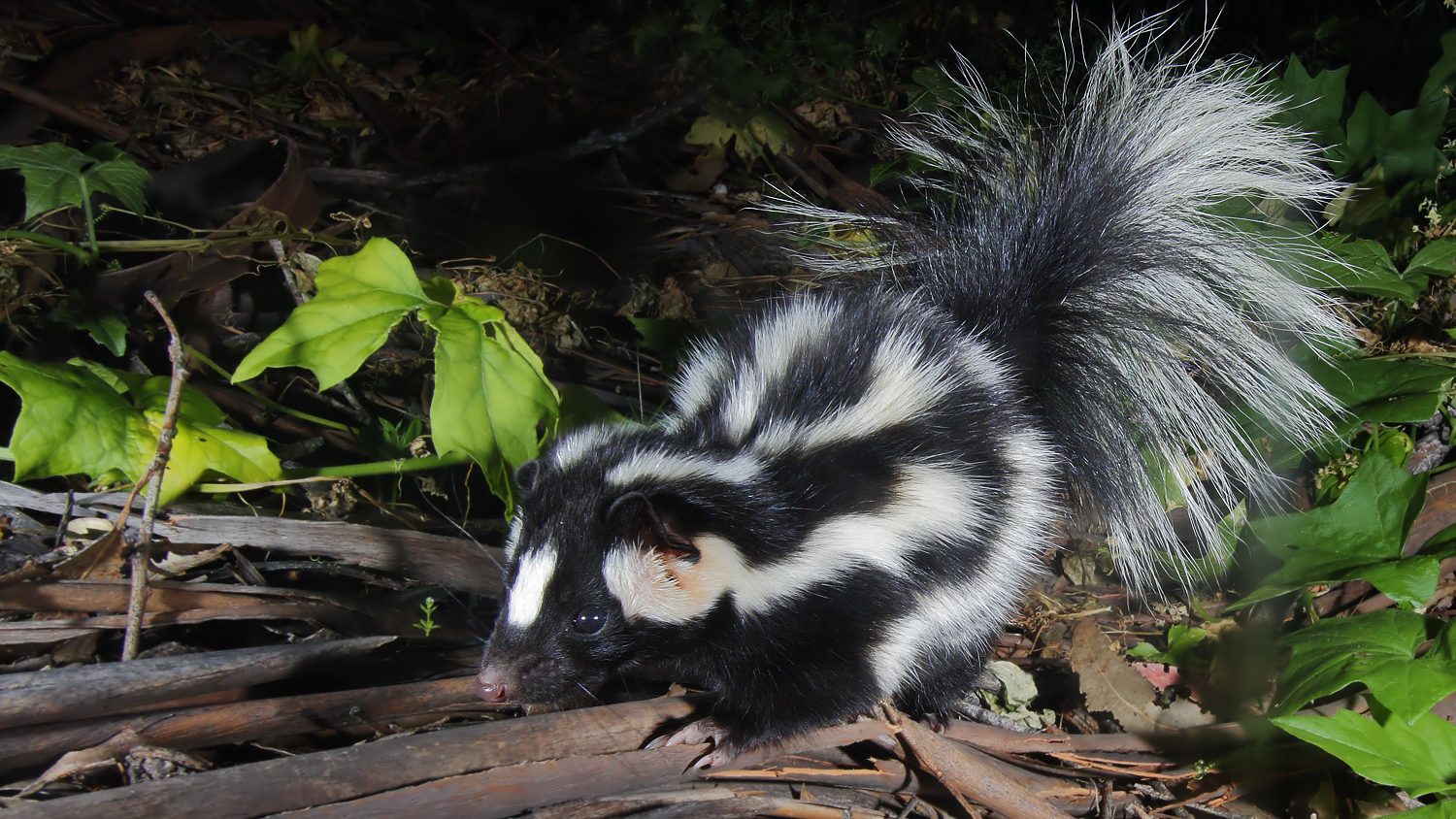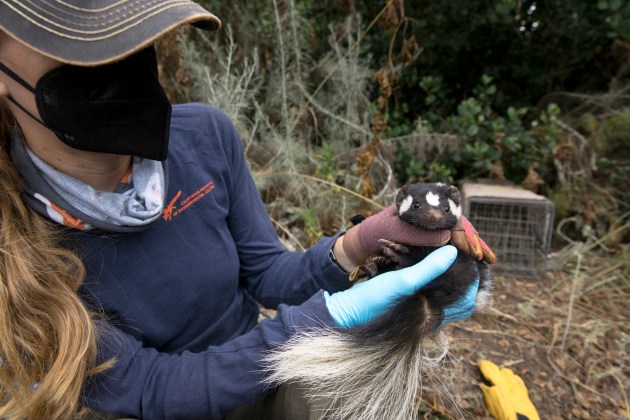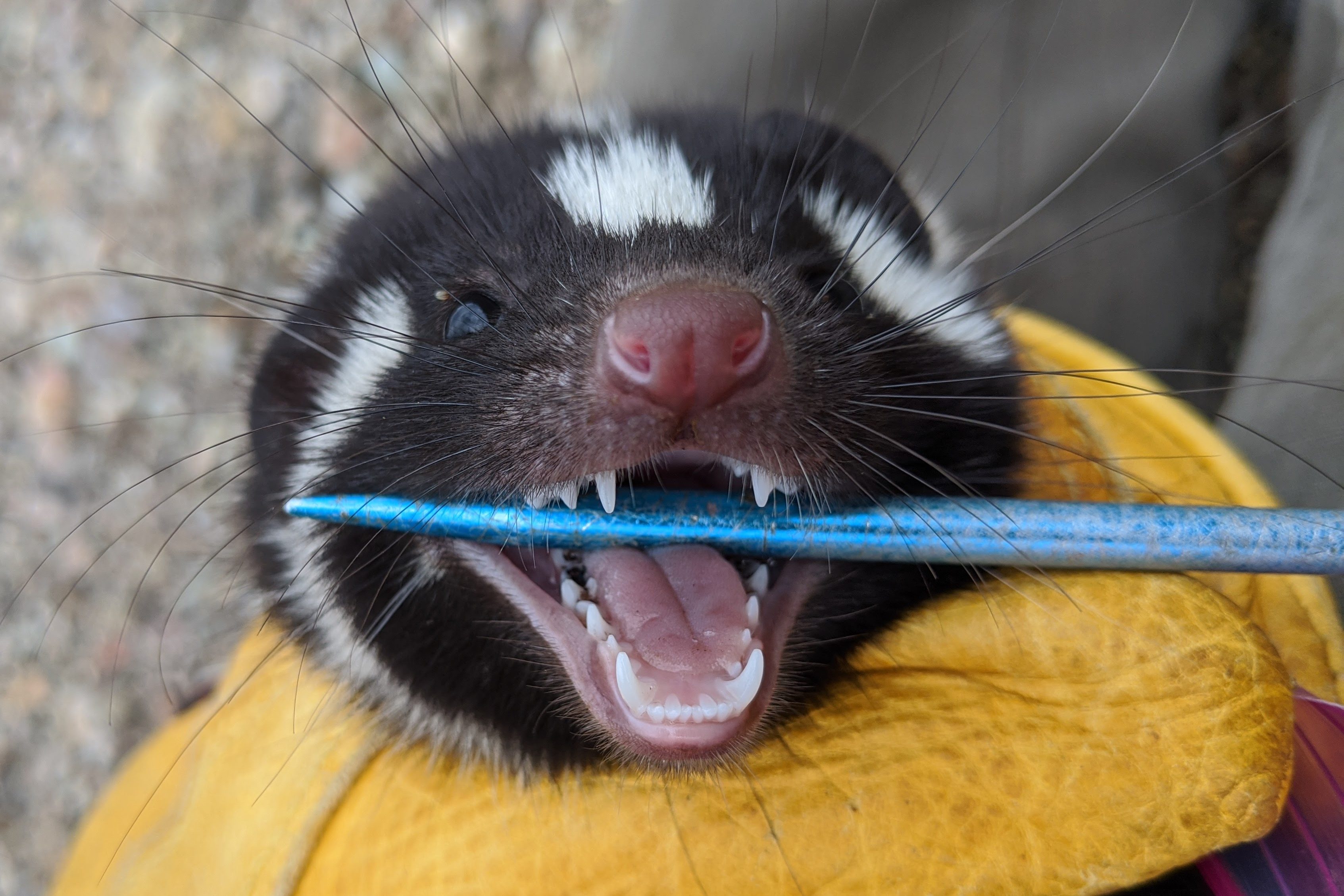The striped skunk is one of the most familiar mammals of North America, instantly recognizable by sight or smell. But there are nine other species of skunks, and arguably the cutest of the bunch is the spotted skunks.
There are three very similar species of spotted skunk that live over a wide range of the United States and Mexico. And yet very few people ever see them. They are quite small – about a quarter of the size of a striped skunk – and prefer denser vegetation. Like the striped skunk, they do spray, although the scent is not as pungent.
Biodiversity 101
What you need to know about the variety of life on Earth and how to protect it.
The spotted skunk (like other skunk species) sprays as a last resort. This little skunk tries to ward off an intruder, first by stamping its feet. Then it does a handstand. Yes, really. The skunk’s two front paws stay on the ground while its hind legs and tail wave in the air.
“I find it more cute than threatening,” says Lara Brenner, island scientist for The Nature Conservancy in California. Brenner monitors island spotted skunks as part of her work on the Channel Islands off the coast of California. Even during her fieldwork, she often doesn’t see spotted skunks that she hasn’t caught in a live trap.
But camera traps provide a look at the life and times of western spotted skunks. Including the handstands.

On Santa Cruz
Eight Channel Islands lie off the coast of California, with the largest being Santa Cruz. Santa Cruz is a biological wonderland, with more than 1,000 species of plants and animals, including some found nowhere else on Earth. But when The Nature Conservancy purchased much of Santa Cruz in 1978, it was on the verge of ecological collapse – in no small part due to herds of feral pigs and sheep.
The most well-known species affected by these invasive mammals was the island fox, a diminutive canid found on the island for around 10,000 years. The feral pigs caused not only habitat damage, but also attracted golden eagles from the mainland. These eagles found the foxes to be easy prey.
The foxes appeared headed for extinction until The Nature Conservancy instituted an innovative and effective conservation program. The sheep were removed in the 1980s. The pigs were gone by 2006, and the golden eagles relocated. Shortly thereafter, the foxes were reintroduced.


In 2004, fewer than 100 foxes remained in the wild. Today, there are more than 1,200, a spectacular conservation success story.
This success has garnered a lot of much-deserved attention. Many visitors to the Channel Islands hope to see an island fox, but fewer know about the island spotted skunk.
Anecdotal evidence suggests the skunk was not as affected by the golden eagles. The skunks prefer dense habitat. Golden eagles hunt during the day, and skunks are nocturnal. Spotted skunks were even regularly spotted by visitors to Channel Islands National Park, with images of them strolling through campgrounds.

In 2010, several years after the fox rebound, I joined mammal-watching enthusiast Jon Hall to Santa Cruz, and Jon shared some of those skunk photos with me pre-trip. It was a species he dearly wanted to spot. As we prepared to embark on the ferry to the island, Jon belted out his own lyrics to the popular Black Eyed Peas song: “Tonight’s the night, for spotted skunks!”
It wasn’t to be. We found a half dozen island foxes within our first hour on Santa Cruz. But a very long night resulted in no spotted skunks. And no one we talked to had seen them. (When asked, many national park visitors gave us that side-eye familiar to any naturalist on a strange quest).
And yet, we had photos of skunks walking right through the campground where we were staying. But this may not have been a coincidence.

Of Skunks and Foxes
Lara Brenner has been monitoring terrestrial wildlife on the Channel Islands since 2017. “You were visiting right around when the fox population was really rebounding,” she notes. “There is evidence that there was a decline in skunk abundance after the foxes returned.”
This may well be a return to a natural equilibrium, Brenner says. The island foxes and western spotted skunks coexisted for at least 10,000 years.
“A lot of the focus has rightly been on the return of the fox, but we also want to understand more about the spotted skunk and its interactions with foxes,” she says.
And that’s not easy. “They’re tricky to find, and live trapping is usually not very effective,” she says.
As has been the case with other wildlife research projects, camera traps have been a godsend. Currently, there are around 40-50 camera traps each on Santa Cruz and Santa Rosa, the two Channel Islands with island spotted skunks.
The effort is aided by AI that helps with camera trap classification, saving researchers countless hours of review. TNC developed a camera trap image review platform; it can even recognize skunks. “Managing camera trap data can be a nightmare,” says Brenner. “You typically get endless images of a piece of grass swaying in the breeze. This allows us to focus on the images of skunks and foxes.”
You can see the results in this blog, including skunk behaviors, denning and interactions with foxes. Usually, those interactions are not friendly, but during the fall, both species tolerate each other to feast on non-native figs growing in national park campgrounds.
Do the animals’ diets overlap at other times of year? That’s just one of many lines of inquiry for the research effort.
“There are still so many research questions we want to ask,” says Brenner. “The camera traps offer insights we wouldn’t otherwise have. And they’re a great way to share the wonder of the Channel Islands’ wildlife.”








As others have said the unlikely friends camera trap video is amazing. Thank you for sharing this great and inspiring conservation success story.
Love the article Matthew! I’m scheduled to be on Santa Cruz Nov 5th & 6th and I look forward to seeing the endemic species on my visit. Thanks to @foxtracker805 for sharing that video. Wow!
A skunk and a fox who climb fig trees and get along just fine. Wow!